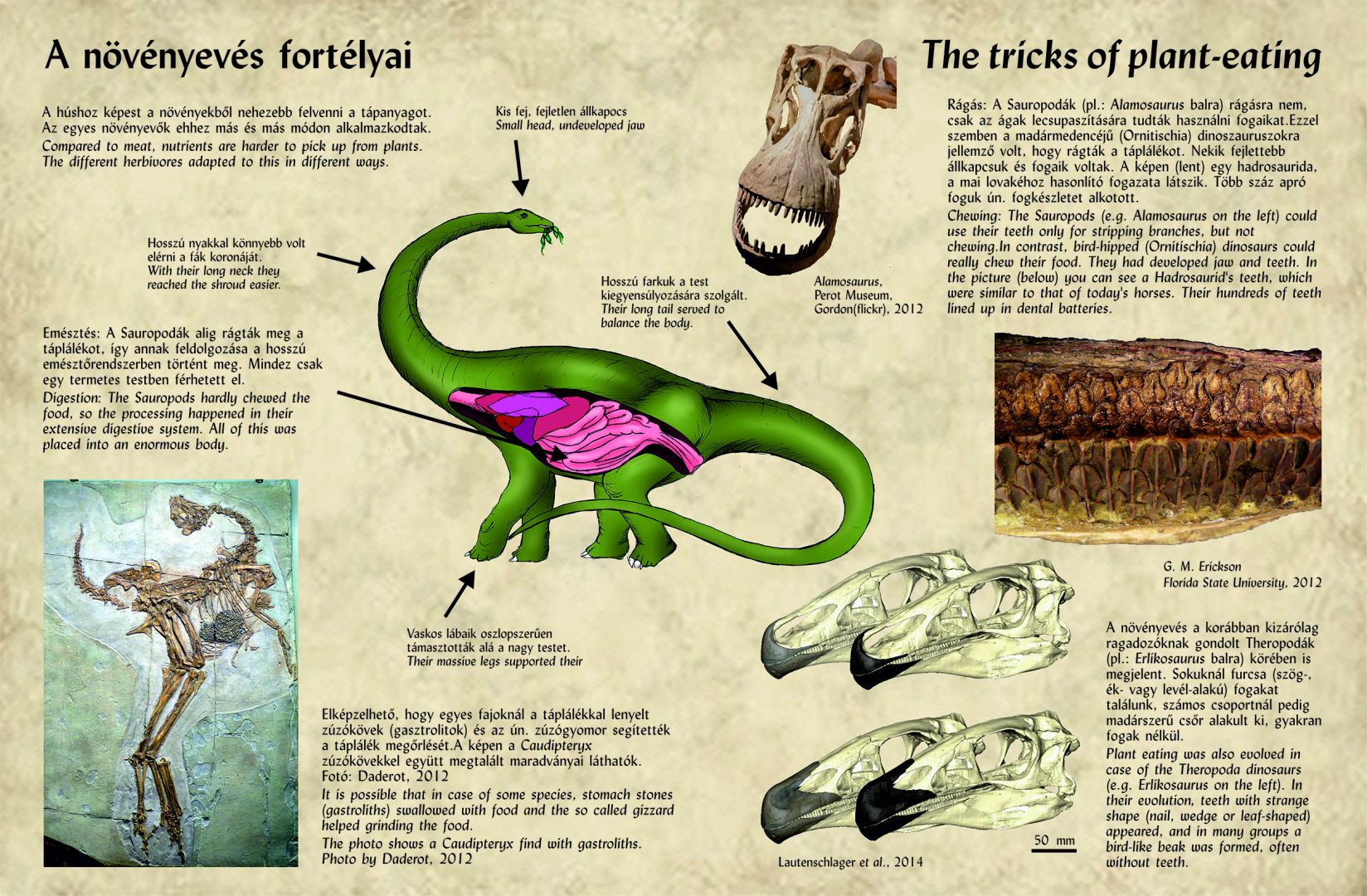ANCIENT ENVIRONMENT, FOSSILS, REPRODUCTION, DIET, BODY - 3. view / Poster chest
The tricks of plant-eating
Compared to meat, nutrients are harder to pick up from plants. The different herbivores adapted to this in different ways.
Digestion: The Sauropods hardly chewed the food, so the processing happened in their extensive digestive system. All of this was placed into an enormous body.
Small head, undeveloped jaw
Their massive legs supported their heavy body like pillars.
With their long neck they reached the shroud easier.
Their long tail served to balance the body.
It is possible that in the case of some species, stomach stones (gastroliths) are swallowed with food and the so-called gizzard helped grinding the food.
The photo shows a Caudipteryx find with gastroliths.
Photo by Daderot, 2012
Chewing: The Sauropods (e.g. Alamosaurus on the left) could use their teeth only for stripping branches, but not chewing.
In contrast, bird-hipped (Ornitischia) dinosaurs could really chew their food. They had developed jaw and teeth. In the picture (below) you can see a Hadrosaurid’s teeth, which were similar to that of today’s horses. Their hundreds of teeth are lined up in dental batteries.
Plant eating also evolved in the case of the Theropoda dinosaurs (e.g. Erlikosaurus on the left). In their evolution, teeth with strange shapes (nail, wedge or leaf-shaped) appeared, and in many groups, a bird-like beak was formed, often without teeth.
